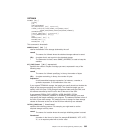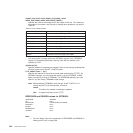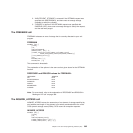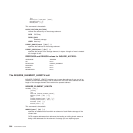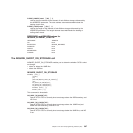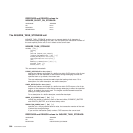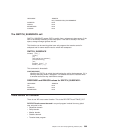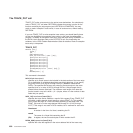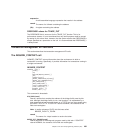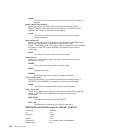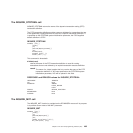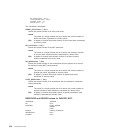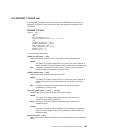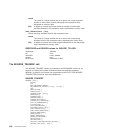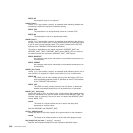
expression
A valid assembler-language expression that results in the address
name4
The name of a fullword containing the address
(Ra) A register containing the address.
RESPONSE values for TRACE_PUT
The RESPONSE field is never set for the TRACE_PUT function. This is for
performance reasons. It is not considered that any useful purpose could be served
by testing for this value. Note, however, that the syntax requires that RESPONSE is
always specified as a parameter on the call. It is recommended that RESPONSE(*)
is always used.
Transaction management XPI functions
This section describes the transaction management XPI calls.
The INQUIRE_CONTEXT call
INQUIRE_CONTEXT returns information about the environment in which a
transaction is running. Specifically, it provides information for transactions running in
a bridge environment.
INQUIRE_CONTEXT
DFHBRIQX [CALL,]
[CLEAR,]
[IN,
FUNCTION(INQUIRE_CONTEXT),]
[OUT,
[CONTEXT(byte1),]
[BRIDGE_TRANSACTION_ID(name4),]
[BRIDGE_EXIT_PROGRAM(name8),]
[BFB_TOKEN(name4),]
[BRXA_TOKEN(name4),]
[FACILITYTOKEN(name8),]
[START_TYPE(byte1),]
RESPONSE (name1 | *),
REASON (name1 | *)]
This command is threadsafe.
BFB_TOKEN(name4)
returns a pointer that contains the address of the bridge facility used by this
task. Although the bridge facility is not a real terminal, it is represented by a
data structure that has the same format as a TCTTE and can be mapped using
the DSECT DFHTCTTE. If CONTEXT returns NORMAL, the contents of this
field are meaningless.
Note: In earlier releases of CICS, this field was called
BRIDGE_FACILITY_TOKEN.
name4
The name of a 4-byte location to receive the token.
BRIDGE_EXIT_PROGRAM(name8)
returns the name of the bridge exit program used by this task. If CONTEXT
returns NORMAL, the contents of this field are meaningless.
Chapter 3. The user exit programming interface (XPI) 401



